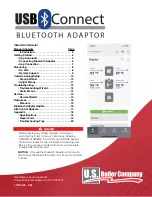
b) Connection of an external playback device
•
You can connect an external audio device (e.g. portable MP3 player) to the LINE IN (12)
port; its signal is forwarded to the downstream audio system or active speakers via the DAB+
radio adapter.
•
Connect the port LINE IN (12) with the audio output of the external device.
c) Inserting/replacing the remote control batteries
The battery of the remote control may be protected from discharge by an isolation film
at initial commissioning. Remove this film before use by pulling it out of the remote
control's battery compartment.
•
Unlock the safety lever and pull the battery holder out at the rear of the remote control.
• Insert a new 3 V lithium button cell battery CR2025 in the correct polarity. The positive pole
of the battery must point up.
•
Close the battery compartment again. The latching tab must latch audibly.
•
If the remote control no longer functions properly, the battery is discharged and must be
replaced with a new one of the same type.
•
Battery change takes place as described above.
d) Connection of the Mains Unit
The mains socket to which the mains unit is connected must be close to the device
and easily accessible to quickly separate the mains adapter from the mains voltage in
case of an error.
Ensure that the voltage indication on the mains adapter matches the mains voltage of
your power supply. Never try to operate the mains unit with any other voltage.
Be careful when handling mains adapters and mains connections. Mains voltage may
cause potentially fatal electric shock.
Make sure that no cables lie around openly. Install cables professionally to prevent
accidents.
•
Connect the low-voltage plug of the mains adapter to the DC 5V connection (11).
•
Plug the mains adapter into a wall socket.
31














































